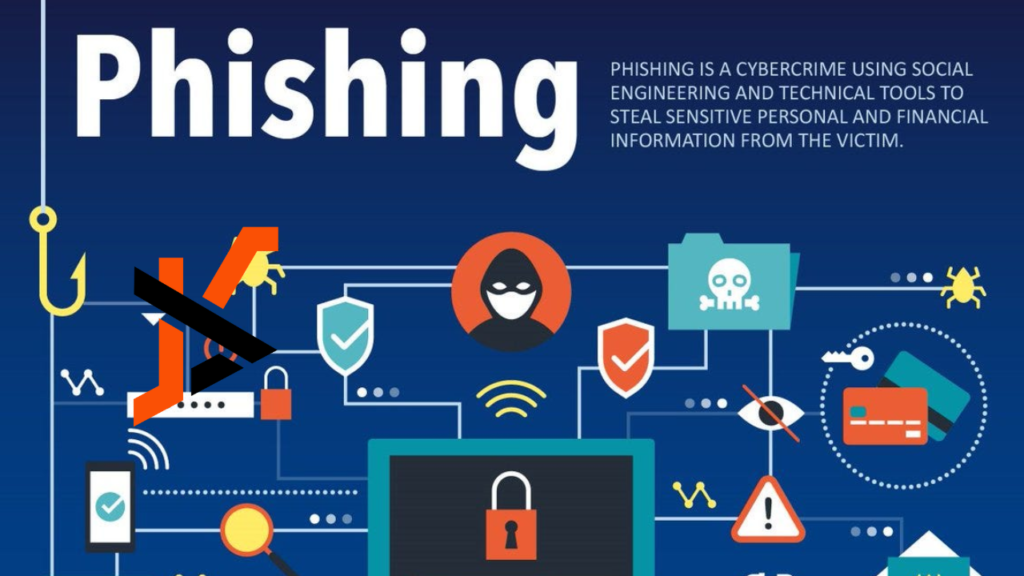In the vast realm of cyber threats, few tactics are as pervasive and insidious as phishing emails. In this exploration, we’ll uncover the deceptive techniques employed by cybercriminals, unraveling the intricate art of social engineering. Understanding these tactics is crucial in fortifying our digital defenses against ever-evolving phishing attacks.
Anatomy of a Phishing Email
Let’s start with the basics: the anatomy of a phishing email. A typical deceptive email comprises carefully crafted elements – the sender’s name, subject line, body content, malicious links, and potentially harmful attachments. These elements work harmoniously to create an illusion of legitimacy, making it challenging for even the most discerning individuals to distinguish between a phishing attempt and a genuine communication.
Advanced Social Engineering Methods
Now, let’s delve into the realm of advanced social engineering. Phishers have upped their game by personalizing their attacks. No more generic messages; attackers leverage information about the recipient to craft convincing narratives. Your name, recent purchases, or even the company you work for – are all fair game for these social engineers. The goal? To exploit trust and familiarity, increasing the chances of a successful phishing attempt. They’re getting so good that businesses are now using the services of cybersecurity companies like Cyjax. In particular, threat intelligence services are one of the few ways you can beat social engineering.
Visual Deception: Hiding in Plain Sight
Visual deception is another weapon in the phisher’s arsenal. They’ve become adept at replicating logos, mimicking email formatting, and employing other visual tricks to create convincing emails. It’s a game of hide-and-seek in plain sight, with attackers camouflaging themselves within the visual elements of legitimate communication. Unmasking these visual deceptions is a critical skill in our defense against phishing.
Evolving Tactics: Beyond Traditional Phishing Emails
Phishing tactics are not static; they evolve. Beyond the traditional, we now encounter dynamic content and real-time information in phishing emails. Attackers leverage these elements to make their emails more convincing and adaptable. Integrating malicious macros and scripts within email content adds a layer of sophistication, making traditional defenses more challenging.
Targeted Phishing: Spear Phishing and Whaling
When cybercriminals take a personalized approach, it’s known as spear phishing. This tactic involves tailoring attacks to specific individuals, increasing the likelihood of success. Whaling, on the other hand, targets high-profile executives. Real-world examples showcase the effectiveness of these targeted approaches, highlighting the need for businesses to be vigilant against such personalized threats.
Combating Deceptive Techniques: Human-Centric Solutions
While technology is a formidable ally, the human element is equally crucial. Employee education and awareness programs empower individuals to recognize and report phishing attempts. Training on discerning deceptive techniques and fostering a culture of skepticism can turn every employee into a frontline defender against phishing attacks.
How Do You Know a Cybersecurity Company You Can Trust?
You’ll be putting a lot of faith into a cybersecurity company. Indeed, you’re giving them the important task of protecting your business, which means you need to trust them. We’re talking about being confident in the team and knowing they can deal with any threat that comes their way.
But the question is, how do you know that you can trust a cybersecurity company? A big mistake is to hire them and find out. Instead, it would help if you researched to learn more about the team. Here are some things you should do.
There are many Positive Testimonials.
You want to hear from previous clients. They will be honest with you about whether you can trust the team and give you an insight into the service or product you can expect. Therefore, look for client testimonials. Please read them and ensure they’re positive and are glowing reviews of the company. If there are low-star ratings, examine them carefully.
They Offer Demos
A cybersecurity company confident of its services and products will offer a demo. They know that when you see them in operation, you will be convinced by their expertise. Indeed, they don’t shy away from this and are not just wanting to grab your money. You can learn more about them and see how the team operates. So, look at their website and see if you can request a demo. If this is easy to do, this is a good sign and demonstrates their confidence.
You Can See Case Studies
Trust is imperative, and you can gain peace of mind when you see scenarios where the cybersecurity company has helped real businesses. That is why you need to see case studies. Companies that are confident in their expertise will provide this freely on their website so you can browse over them at your leisure. You can see what a business wants and the type of response this cybersecurity could offer. What’s more, they’ll showcase what they were able to achieve.
Conclusion
In the ever-evolving game of cat and mouse with cybercriminals, understanding the deceptive techniques in phishing emails is our armor. Our journey has been insightful, from the anatomy of an email to advanced social engineering and the evolving tactics that lie ahead. As we conclude, the call to action is clear: fortify your defenses with technological and human-centric solutions. Together, we can unmask the art of social engineering and make the digital realm a safer place. Stay vigilant, stay secure.

